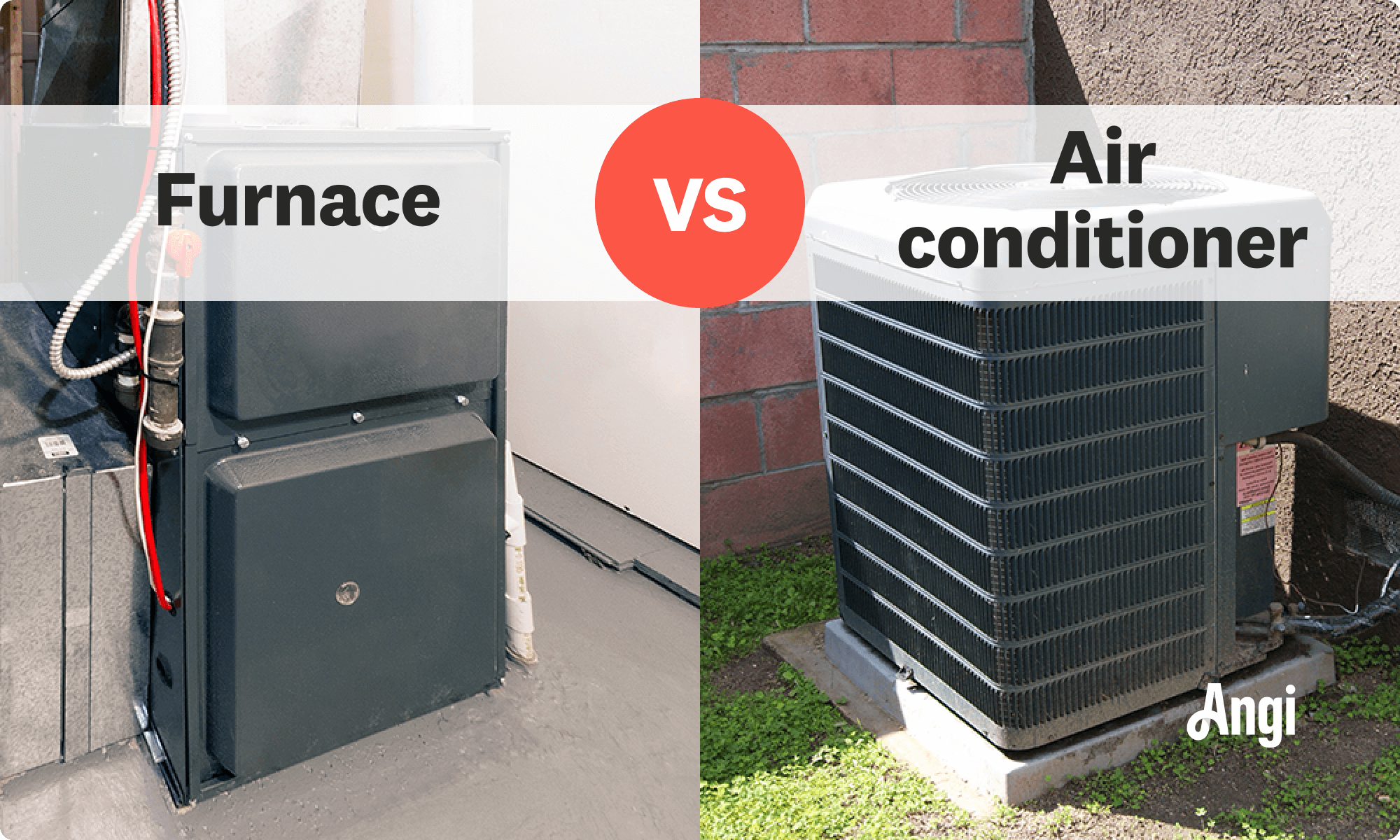
A blower door test can identify air leaks in your home and help boost energy efficiency. Use this blower door test cost guide to see what your test will total.
At home, a comfortable temperature is essential


Your furnace and air conditioning unit are both parts of your HVAC system.
When temperatures rise, turn off your furnace and switch on your AC.
Your AC needs to use the furnace’s fan to circulate air.
Your furnace and your air conditioning system are two central components of your HVAC system, connected and controlled for greater efficiency. During warmer weather, you’ll need to turn off your furnace and use your air conditioner instead.
Your central air conditioning system is independent of your furnace. The outdoor unit isn’t connected to the furnace at all—but they both utilize the same distribution system (vents, fans, filters, and ducts) to push cool and warm air into your home.
Still confused about how a furnace works with AC? Keep reading.

Your furnace and your air conditioning system are part of your home’s HVAC system. They both use air ducts throughout your home to transport cool or hot air, helping your home to maintain a comfortable temperature. You can think of your heating and cooling systems as the lungs of your home, while the ductwork is the airway.
But your central AC system works independently of your furnace. In fact, the outdoor AC unit isn’t connected to the furnace at all, even though both systems use your home’s ductwork and vents to circulate cool air.
A furnace works by heating up air and sending it through the ducts of your home using a fan. During cooler winter months, your furnace helps to ensure that you stay toasty and warm inside your house.
Different types of furnaces use different fuel sources including natural gas, electricity, and propane. The blower located in the base of the furnace is used to blow both hot air from the furnace and cool air from the AC throughout the ducts to reach the vents in the home.
This begs the question: Does the furnace control the AC? The answer is no, but the systems work together with the AC using the same blower as the furnace.
If you have central air, your air conditioning system works in much the same way as your furnace. But instead of taking in air from the outside and heating it, your air conditioner cools the air down. The cool air is then distributed throughout your home via ducts.

So, how does the furnace work with AC? In general, you shouldn’t have both systems running at once. Not only does this defeat the purpose of heating or cooling your home, but it also means that your HVAC system will experience additional wear and tear.
In most cases, the thermostat will have separate settings for heating and cooling. Once temperatures get warm enough that you no longer need to heat your home, you should switch over to air conditioning until the cooler months return.
During the summer, you should lower (or turn off) any humidifiers attached to your furnace, since one job of your AC unit is to dehumidify air. During the winter, you want the humidifier to leave some moisture in the air to help increase overall comfort and make your home feel warmer.
Your air conditioner and your furnace are two important and interconnected parts of your HVAC system. Because both the heating and cooling systems of your home are encompassed by the HVAC system, it’s especially important that you keep it well-maintained so you don’t need to shell out the cost of a new furnace. Damage to one part often leads to damage within the other. For example:
Ductwork: Damage to your ductwork leads to hot or cold air loss in your basement.
Improper air conditioner installations: AC units that aren't properly installed can bleed cool air into your furnace during the winter, making its job far more difficult.
Furnace fans: If your furnace fan stops operating during the summer, all of the cold air being produced by your AC unit won't go anywhere.
Broken thermostat: This part must be set right to engage “hot” and “cool” options appropriately.
You can protect your furnace, AC, and HVAC system by conducting regular checkups and fixing any issues that may arise right away. A good rule of thumb is to have your furnace inspected about once a year before cool weather hits in late summer or early fall.
You should also bleed your furnace yearly to ensure it runs efficiently. Doing these things can help you to catch any problems and make sure that your furnace is in tip-top shape before winter arrives. Replace your furnace and air conditioner filters regularly. If you need a new furnace, contact a local furnace installer to discuss your options.
From average costs to expert advice, get all the answers you need to get your job done.

A blower door test can identify air leaks in your home and help boost energy efficiency. Use this blower door test cost guide to see what your test will total.

Explore factors influencing oil furnace replacement cost, additional expenses, and savings tips. Make an informed decision for a cozy home.

When your HVAC system is acting up, it could be the blower motor to blame. See how much blower motor replacement costs and what impacts the price here.

When you notice hot and cold zones in your home, it pays to learn how to balance airflow in your ducts to even out the temperature.

Knowing when to replace your boiler will help you avoid last-minute emergencies in the middle of winter. Here are seven signs that you may need a brand-new unit.

Having dirty evaporator and condenser coils works your HVAC system harder than it needs to. Here’s how to clean your air conditioner coils like a pro.